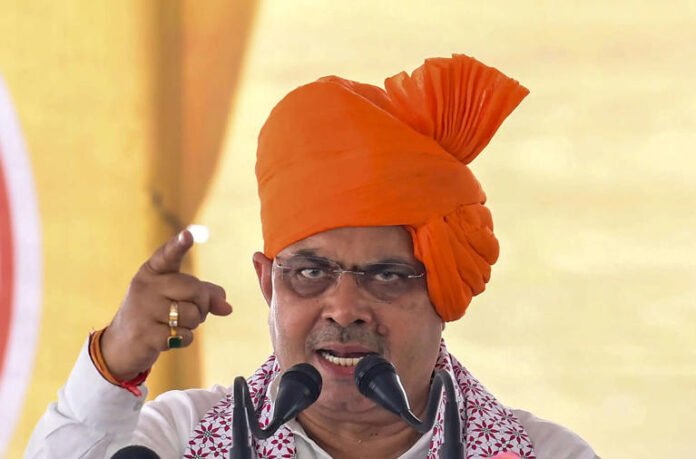Chief Minister Bhajan Lal Sharma is scheduled to visit Pilani on April 21 to review the progress of the ambitious Yamuna Water Project. The initiative, aimed at supplying Yamuna river water to the parched districts of Rajasthan, is considered a game-changer for the water-scarce areas of Jhunjhunu, Churu, and nearby regions.
The CM’s visit underscores the state government’s commitment to fast-tracking critical infrastructure projects, especially those tied to water security. During his review in Pilani, Sharma is expected to conduct on-ground assessments, interact with project officials, and hold a public dialogue to listen to the concerns and expectations of local residents.
The Yamuna Water Project, part of a larger inter-state water-sharing agreement, seeks to transport water from the Yamuna River through a complex system of pipelines, treatment plants, and distribution networks. Once completed, the project is expected to benefit lakhs of people across the semi-arid Shekhawati region by providing a reliable and sustainable source of drinking water.
Pilani, known primarily for its educational institutions like BITS Pilani, has long struggled with erratic water supply. Groundwater levels have dropped significantly over the years due to over-extraction and minimal recharge. The arrival of surface water from the Yamuna River is projected to drastically improve the quality of life in the region, reduce dependence on depleting groundwater, and boost agriculture and industry alike.
Ahead of the CM’s visit, district officials have been directed to ensure that all documentation, technical presentations, and progress reports are ready for review. Field engineers and contractors have also been instructed to present the latest updates regarding the pipeline laying, treatment plant construction, and pump house installations.
According to officials from the Public Health Engineering Department (PHED), over 60% of the pipeline work has already been completed in the Jhunjhunu and Churu segments, with Pilani emerging as a major nodal point for distribution. The upcoming monsoon season has added urgency to the timeline, as completion before the rains would allow initial trial runs and early-stage distribution.
CM Sharma’s review is also expected to focus on timelines, cost escalations, environmental clearances, and potential land acquisition bottlenecks that may be hindering progress. Sources within the state government have indicated that the Chief Minister is keen on launching the first phase of water supply by early 2026, and this visit will help lay out a clearer road map.
In addition to technical meetings, Sharma is likely to hold an open address to residents, emphasizing the government’s focus on equitable water access, sustainable resource use, and the long-term economic revival of rural Rajasthan. The visit also holds political significance, as water has remained a deeply emotional and electoral issue in the state. Delivering on such a transformative promise could enhance public trust and consolidate the ruling party’s support in the region.
Environmentalists and local activists, while largely supportive of the project, have also raised concerns about inter-basin transfers and the ecological impact of drawing water from the Yamuna, a river already burdened by pollution and overuse. They are urging the state to pair infrastructure with conservation—recharging local water bodies, restoring catchment areas, and promoting responsible water use.
To that end, the CM is also expected to announce a complementary initiative focusing on water literacy, rainwater harvesting, and community-based water monitoring systems. The idea is to treat the Yamuna supply not as an infinite resource, but as a lifeline that must be managed with care and collective responsibility.
As the visit approaches, excitement is building in Pilani and the surrounding villages. For many residents, this is more than a review meeting—it’s a long-awaited step toward water security, dignity, and a better future. The spotlight on Pilani on April 21 might just mark the beginning of a new chapter in Rajasthan’s ongoing battle against water scarcity.

